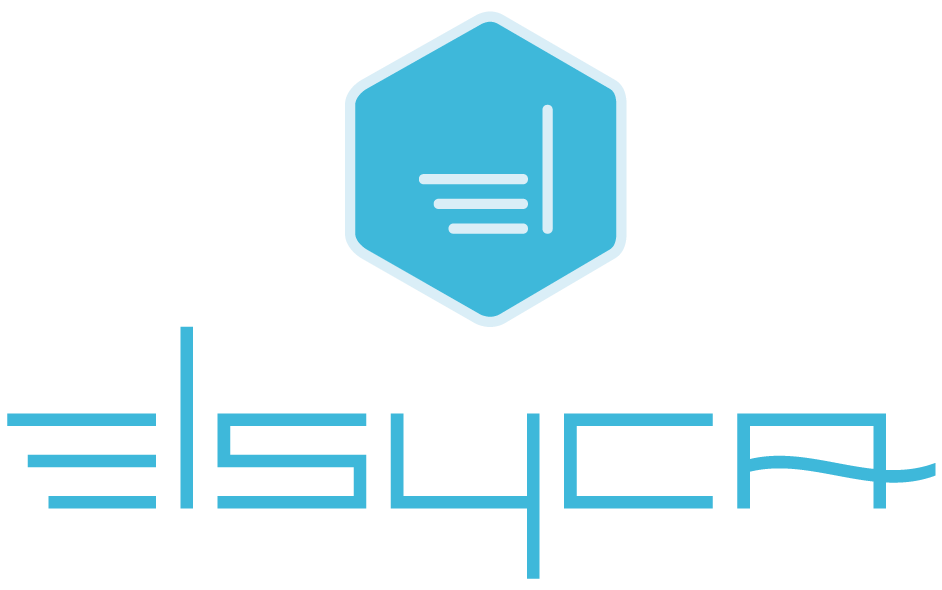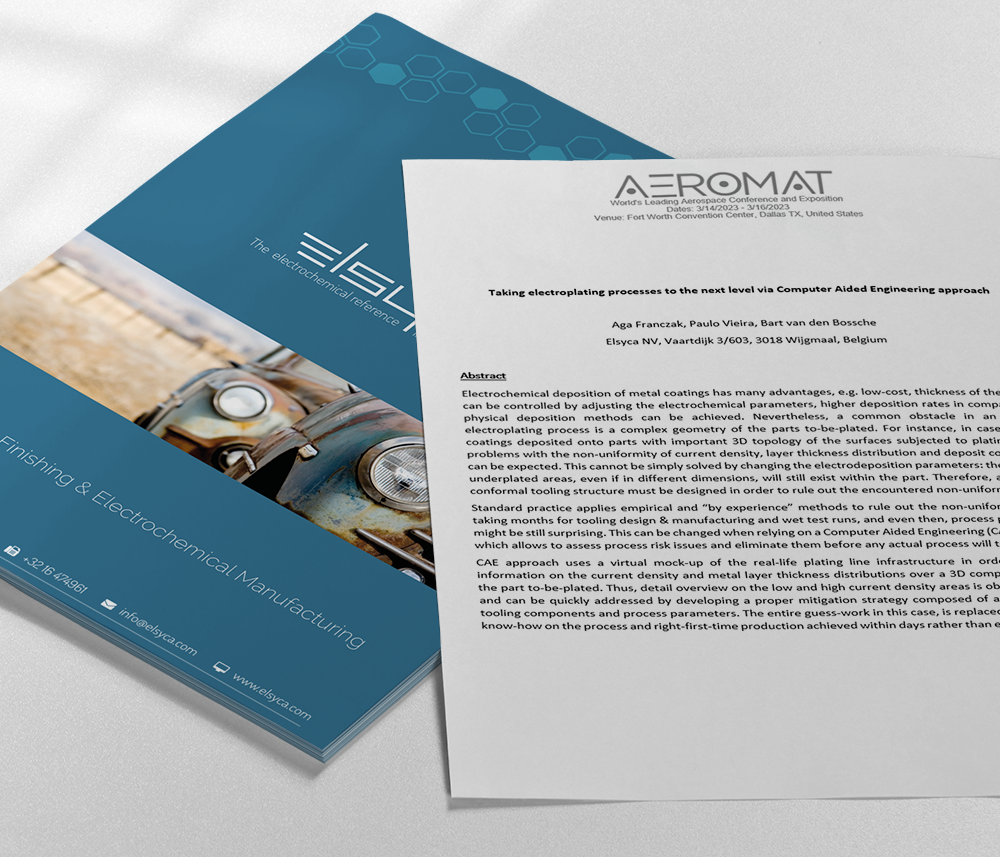
Taking electroplating processes to the next level via Computer Aided Engineering approach (AEROMAT 2023)
AEROMAT 2023 presentation

Taking electroplating processes to the next level via Computer Aided Engineering approach (AEROMAT 2023)
Aga Franczak; Paulo Vieira; Bart van den Bossche, Elsyca NV.
Abstract
Electrochemical deposition of metal coatings has many advantages, e.g. low-cost, thickness of the coating can be controlled by adjusting the electrochemical parameters, higher deposition rates in comparison to physical deposition methods can be achieved. Nevertheless, a common obstacle in an efficient electroplating process is a complex geometry of the parts to-be-plated. For instance, in case of Zn-Ni coatings deposited onto parts with important 3D topology of the surfaces subjected to plating, severe problems with the non-uniformity of current density, layer thickness distribution and deposit composition can be expected. This cannot be simply solved by changing the electrodeposition parameters: the over- and underplated areas, even if in different dimensions, will still exist within the part. Therefore, a dedicated conformal tooling structure must be designed in order to rule out the encountered non-uniformities.
Standard practice applies empirical and “by experience” methods to rule out the non-uniformity issues, taking months for tooling design & manufacturing and wet test runs, and even then, process performance might be still surprising. This can be changed when relying on a Computer Aided Engineering (CAE) approach which allows to assess process risk issues and eliminate them before any actual process will take place:
CAE approach uses a virtual mock-up of the real-life plating line infrastructure in order to provide information on the current density and metal layer thickness distributions over a 3D computer model of the part to-be-plated. Thus, detail overview on the low and high current density areas is obtained upfront and can be quickly addressed by developing a proper mitigation strategy composed of adequate active tooling components and process parameters. The entire guess-work in this case, is replaced with the exact know-how on the process and right-first-time production achieved within days rather than extensive weeks.
